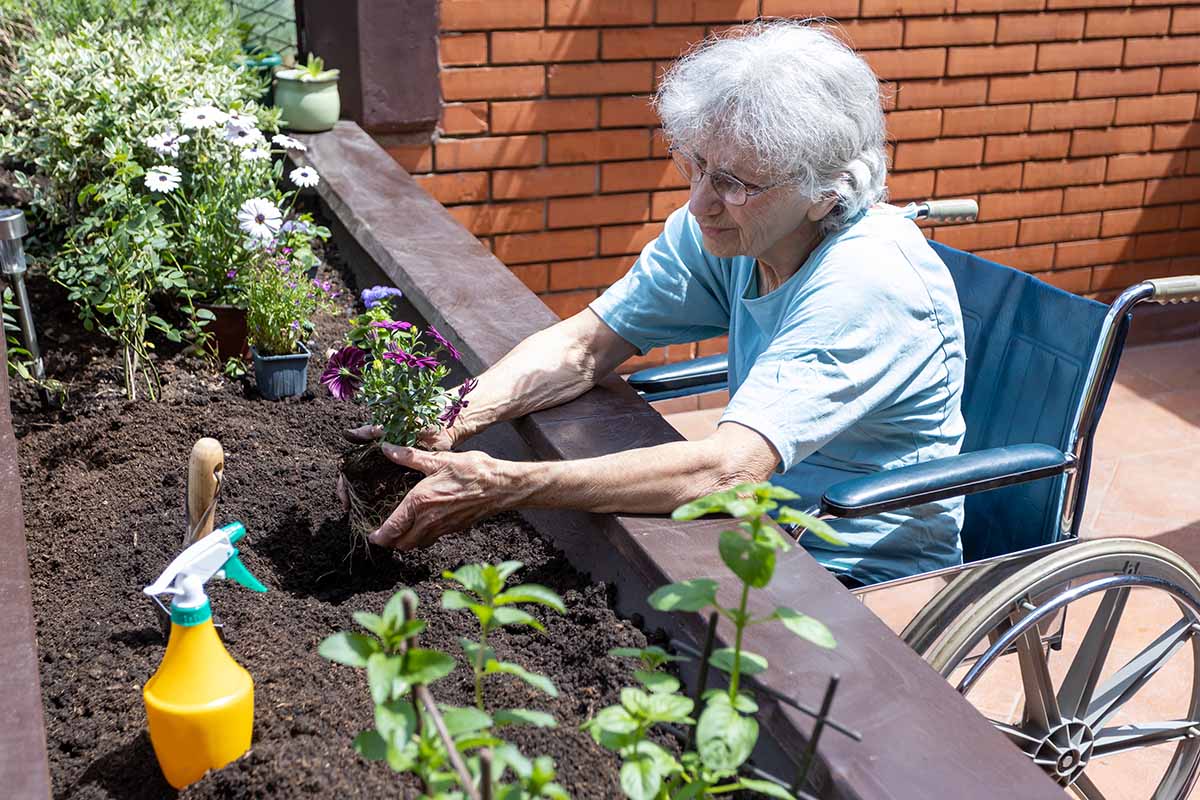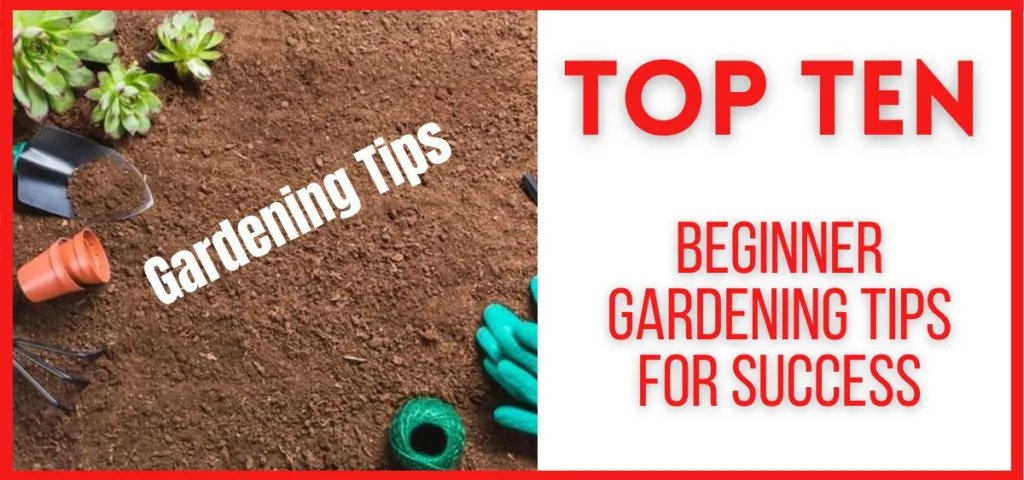In the realm of gardening, success often hinges on making savvy choices, especially during the inaugural year of your garden’s journey. These gardening tips are invaluable companions on your quest for thriving greenery. While tailored for novice gardeners, they hold relevance for seasoned enthusiasts alike, serving as timeless guidelines for cultivating flourishing gardens.
Gardening is not just a hobby; it’s an enchanting odyssey, allowing you to commune with nature, nurture your sustenance, and craft picturesque outdoor havens. Yet, for beginners, venturing into this realm can seem intimidating. Fear not; armed with these 10 indispensable tips, you’ll navigate your gardening expedition with confidence and grace, ensuring a bountiful harvest and a sanctuary of natural beauty to revel in throughout the seasons.
Also, read: Top 10 Budget-Friendly Backyard Decor Ideas in 2024
Green Thumb Goals: Top 10 Beginner Gardening Tips for Success in 2024
Venturing into the world of gardening is an exciting endeavor that demands a grasp of plant maintenance, soil vitality, and the nuances of changing seasons. For beginners, cultivating a sense of curiosity and exercising patience are essential ingredients for nurturing a flourishing garden oasis. Whether you’re planting your first seeds or tending to young sprouts, approaching each task with an open mind and a willingness to learn will pave the way for a rewarding gardening experience. By embracing the journey with enthusiasm and a willingness to adapt, beginners can lay the groundwork for a vibrant and thriving garden space that brings joy and tranquility throughout the seasons.

1. Start with small
Starting small in your gardening journey is not just manageable, it’s a smart and sustainable approach. Begin with a compact, manageable space, like a raised bed or a few containers on your balcony. This allows you to focus on mastering the basics, like watering, weeding, and providing adequate sunlight, without feeling overwhelmed. As you gain confidence and experience, you can gradually expand your garden or try more challenging plants. Remember, smaller gardens often translate to less waste, less water usage, and a more personalized and enjoyable experience. So, grab a few seeds or seedlings, pick a sunny spot, and let the joy of gardening blossom!
2. Know your growing zone
Unveiling your growing zone is the first step to unlocking a thriving garden. This zone, designated by the USDA Plant Hardiness Zone Map, categorizes regions based on their average annual minimum winter temperature. Each zone, spanning 10°F increments, dictates which plants can withstand the local climate. Knowing your zone empowers you to select plants suited to your specific temperature range, maximizing their survival and flourishing potential. By aligning your plant choices with your zone, you’ll witness vibrant blooms, flourishing vegetables, and a garden bursting with life, tailored to thrive in your unique climate.
Also, read: Top 10 Tips for Building Healthy Relationships
3. Choose the right spot
Choosing the right spot for your garden is a key element for success, especially as a beginner. Sunlight is perhaps the most vital ingredient for healthy plants. Most vegetables and many flowering plants crave at least 6–8 hours of direct sunlight each day. Observe your yard throughout the day, noting the areas that receive full sun and those in partial or complete shade. If you have limited solar options, don’t despair! Leafy greens like lettuce and spinach can tolerate some shade. Also, consider the proximity to water.
Dragging a hose across the yard becomes a chore, so having a water source close at hand helps maintain consistency in watering. Avoid low-lying areas where water pools after rain, as this can lead to root rot. Finally, think about the future. Will that sapling shade your garden in a few years? Choosing a spot with the right light, water access, and space for growth sets the foundation for a thriving garden.
4. Test your soil
Knowing your soil’s secrets is like having a cheat sheet for gardening success. Testing your soil’s pH, which measures acidity or alkalinity, is crucial for choosing plants that thrive in specific conditions. Most plants prefer a slightly acidic to neutral pH (around 6.5–7.0). However, some plants, like blueberries, actually love acidic soil! A soil test kit, readily available at your local garden center, can guide you through the simple process of collecting a sample and interpreting the results.
This valuable information empowers you to amend your soil if needed, whether by adding lime to raise the pH or organic matter like compost to increase its acidity. By testing your soil, you unlock its full potential, ensuring your plants have the right foundation to flourish and reward you with a thriving garden.
Also, read: Top 10 Cat Breeds in the World
5. Start seeds indoors
Starting seeds indoors gives your plants a head start on the growing season, allowing them to mature and be ready for transplanting outdoors sooner. This is especially beneficial for vegetables and flowers with longer growing seasons. To get started, choose a sunny window or invest in grow lights. Utilize seed-starting trays or recycled containers with drainage holes.
Fill them with a sterile seed starting mix, moisten them thoroughly, and follow the planting depth recommendations on the seed packet. Plant your seeds, water gently, and cover the trays with clear plastic to create a mini greenhouse. Maintain consistent moisture and warmth, and remove the plastic once seedlings emerge. Gradually introduce them to cooler temperatures and outdoor conditions before transplanting them into your garden after the danger of frost has passed.
6. Plant at the right time
Planting your garden at the right time is one of the most critical aspects of success, especially for beginners. Understanding your region’s frost dates is crucial. Cool-season vegetables like broccoli, lettuce, and peas thrive in cooler temperatures and are often planted in early spring or fall. Warm-season favorites like tomatoes, peppers, and cucumbers need warm soil to flourish, so plant them only after the last frost. Seed packets are also a treasure trove of information, specifying the optimal planting time for different vegetables and flowers.
Don’t forget: some plants do better when started from seed indoors a few weeks before the ideal planting date. This allows you to hit the ground running when outdoor conditions are just right, ensuring your plants get the strongest possible start and increasing your chances of a bountiful harvest. Referencing online resources, talking to local garden centers, and learning about your specific growing zone will help ensure you’re planting everything exactly when it needs to go into the ground.
Also, read: Top 10 Most Spoken Languages in the World
7. Water deeply and regularly
While it might seem intuitive to water your plants a little every day, this can harm them. Frequent, shallow watering only wets the top layer of soil, leaving the roots parched deeper down. Instead, aim to “water deeply and regularly.” This means delivering a slow, steady stream of water at the base of the plant until the water starts to run off.
This encourages roots to grow deep, searching for moisture, making your plants more resilient to drought and heat stress. How often you water depends on various factors, like soil type, weather, and plant variety. So, check the top two inches of soil daily and water again when it feels dry to the touch. This approach ensures your plants receive the deep and consistent hydration they need to thrive.
8. Fertilize according to need
While fertilizer can give your plants a boost, it’s crucial to avoid overdoing it. Most plants don’t require frequent feeding, and excess fertilizer can harm them and pollute waterways. Instead, focus on understanding your soil’s health through a test kit.
This will reveal any nutrient deficiencies and guide your choice of fertilizer, if needed. Start with organic options like compost or aged manure, and always follow application instructions meticulously. Remember, a healthy garden is often self-sufficient, and sometimes the best fertilizer is simply letting nature take its course.
Also, read: Top 10 Healthy Cooking Hacks for Busy Weeknights in 2024
9. Mulch around your plants
Mulch isn’t just a decorative touch; it’s a game-changer for beginner gardeners. This layer of material spread around your plants offers a multitude of benefits. Firstly, it acts like a natural blanket, retaining moisture in the soil, and minimizing the need for frequent watering, especially during hot summer months. Secondly, mulch acts as a weed barrier, suppressing weed growth and saving you time and effort on weeding.
Additionally, it helps regulate soil temperature, keeping it cool in the summer and warmer in the winter, protecting plant roots from extreme fluctuations. As a bonus, mulch can improve the aesthetics of your garden, providing a neat and finished look. So, grab your favorite mulch (shredded bark, wood chips, or even compost) and give your plants a helping hand!
10. Be patient and enjoy the process
While the promise of homegrown vegetables and vibrant blooms is enticing, remember that gardening is a marathon, not a sprint. Growth takes time, and there will be setbacks along the way. A late frost might nip your seedlings, or a pesky insect might munch on your leaves. Don’t get discouraged! Embrace the learning opportunities these challenges present.
Celebrate the tiny victories, like witnessing your first sprout peek through the soil or a bee buzzing happily around your flowers. Take time to savor the simple joys of being outdoors, feeling the soil beneath your fingers, and witnessing the magic of nature unfold in your little piece of paradise. As the seasons change and your garden flourishes, the sense of accomplishment and satisfaction of nurturing life from seed to harvest will be well worth the wait.
FAQs on Beginner Gardening Tips
Q. What are some “low-maintenance” vegetables I can grow as a beginner?
Tomatoes, peppers, herbs like basil and mint, and leafy greens like lettuce and kale are all relatively low-maintenance options for beginner gardeners.
Also, read: Top 10 Podcasts for Inspiration and Personal Growth in 2024
Q. Are there any eco-friendly trends I can incorporate into my beginner garden?
Absolutely! Using native plants, opting for a peat-free potting mix, and creating pollinator-friendly habitats with flowering plants are all trending eco-friendly choices for beginner gardens.
Q. Can I successfully grow vegetables in containers if I don’t have a yard?
Yes! Many vegetables, including tomatoes, peppers, lettuce, and herbs, can be grown successfully in containers on balconies, patios, or even sunny windowsills.
Q. What are some “smart gardening” technologies that could help me as a beginner?
There are various smart watering systems and monitoring tools available that can help you track soil moisture and temperature and even provide personalized recommendations for your specific garden.
Q. Where can I find more resources and support for beginner gardeners?
Local gardening clubs, online gardening communities, and educational resources provided by extension services or local universities are excellent sources of information and support for beginner gardeners.
Conclusion: The Final Thought
As you embark on your gardening journey, remember that success isn’t solely about growing the biggest or most beautiful plants. It’s about nurturing a connection with nature, learning from your experiences, and enjoying the process. By following these top 10 beginner gardening tips, you’ll be well on your way to creating a thriving garden that brings you joy and fulfillment.
Remember, gardening is a journey, not a destination. There will be challenges along the way, but with patience, perseverance, and a little bit of luck, you’ll overcome them and reap the rewards of your hard work. So, grab your gardening gloves, get your hands dirty, and start exploring the wonderful world of gardening. Happy gardening!
Also, read: Top 10 Must Read Books for the Literary American in 2024


































